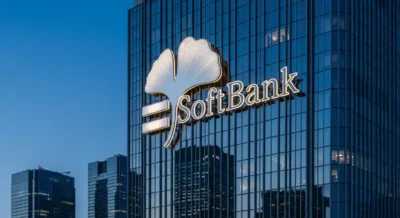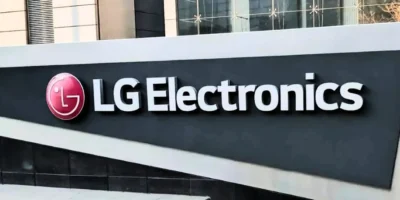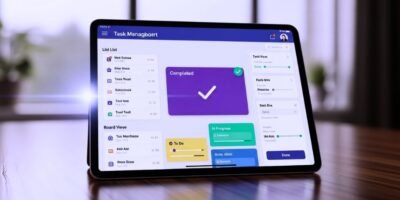Professionals in the fast-paced business landscape require instant access to critical business insights regardless of location. Mobile Business Intelligence (BI) brings the power of data analysis and reporting to mobile devices, enabling users to make informed decisions on the go. With the proliferation of smartphones and tablets, mobile BI empowers organizations to extend their data capabilities beyond traditional office settings. This article explores the concept of mobile business intelligence, its benefits, challenges, and its transformative impact on data-driven decision-making.
Understanding Mobile Business Intelligence
Mobile Business Intelligence refers to using mobile devices like smartphones and tablets to access, analyze, and present business data in real-time. Mobile BI platforms provide users with interactive dashboards, reports, and visualizations that allow them to explore and make sense of data while away from their desks. Mobile BI leverages cloud-based technologies, responsive design, and intuitive interfaces to deliver a seamless and user-friendly experience for data analysis and reporting.
Benefits of Mobile Business Intelligence
You can access critical data and insights on the go with mobile business intelligence. It allows you to make informed decisions quickly, whether in the office or in the field.
Real-Time Decision-Making
Mobile BI empowers users to access real-time data and insights wherever they are. Decision-makers can view up-to-date reports, monitor key performance indicators (KPIs), and respond promptly to changing conditions. Real-time decision-making enables organizations to stay agile, seize opportunities, and mitigate risks effectively.
Increased Accessibility and Productivity
Mobile BI eliminates the limitations of being tied to a desktop computer. With mobile devices, professionals can access business insights and collaborate with colleagues. This accessibility increases productivity as users can make data-driven decisions and take immediate action without delay.
Enhanced Data Exploration and Visualization
Mobile BI provides interactive dashboards and visualizations optimized for smaller screens. Users can explore data, drill down into specific details, and apply filters to gain deeper insights. Visualizations are tailored for mobile viewing, ensuring clarity and ease of understanding. This enhanced data exploration enhances decision-making and empowers users to uncover trends and patterns on the fly.
Seamless Collaboration
Mobile BI facilitates collaboration among teams and stakeholders. Users can share reports, dashboards, and insights with colleagues in real time, fostering a culture of collaboration and data-driven decision-making. With mobile BI, teams can collectively align efforts, make informed decisions, and respond quickly to business challenges.
Offline Capabilities
Mobile BI platforms often offer offline capabilities, allowing users to access and analyze data even when not connected to the internet. This feature ensures uninterrupted access to critical information, regardless of network availability. Users can download reports and visualizations beforehand, ensuring data accessibility in remote or low-connectivity areas.
Challenges of Mobile Business Intelligence
Despite the many benefits of mobile business intelligence, some challenges come with it. One of the main challenges is ensuring the security of sensitive data while it is being accessed and shared on mobile devices.
Data Security
Mobile devices pose security risks due to their susceptibility to loss, theft, or unauthorized access. Organizations must implement robust security measures, such as encryption, authentication, and device management, to protect sensitive business data. User awareness and adherence to security protocols are crucial to mitigate potential risks.
Device Compatibility and User Experience
Mobile BI applications must be compatible with various devices and operating systems to ensure a seamless user experience. Developers must prioritize responsive design and user-friendly interfaces to optimize visualizations and reports for screen sizes and interaction patterns.
Data Connectivity and Performance
Mobile BI relies on stable and fast data connectivity to deliver real-time insights. In areas with weak network coverage or slow internet speeds, users may experience delays or disruptions in accessing data. Optimizing data transfer, compression, and caching techniques can help mitigate these challenges and improve performance.
Data Governance and Quality
Maintaining data governance and ensuring data quality is essential for mobile BI. Organizations must establish data governance policies, define access permissions, and maintain data integrity across mobile devices. Ensuring that users can access accurate and reliable data is crucial for making informed decisions.
User Adoption and Training
The successful implementation of mobile BI requires user adoption and proper training. Organizations must provide comprehensive training programs to familiarize users with mobile BI tools, functionality, and best practices. User support and ongoing education are crucial for maximizing the benefits of mobile BI and ensuring its effective utilization.
Conclusion
Mobile Business Intelligence empowers organizations to unlock the power of data-driven decision-making on the go. With real-time access to insights, enhanced data exploration, seamless collaboration, and increased productivity, mobile BI enables professionals to make informed decisions anytime, anywhere.
However, organizations must address challenges related to data security, device compatibility, data connectivity, data governance, and user adoption to leverage mobile BI’s potential fully. By embracing mobile BI technologies and fostering a data-driven culture, organizations can stay competitive, respond swiftly to market dynamics, and drive success in the mobile era.













